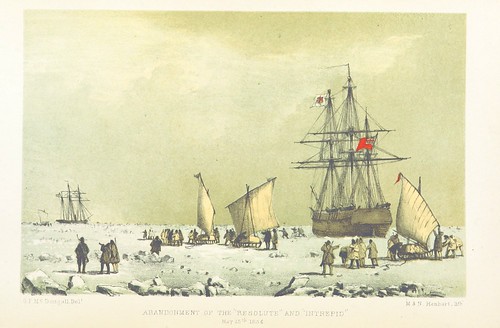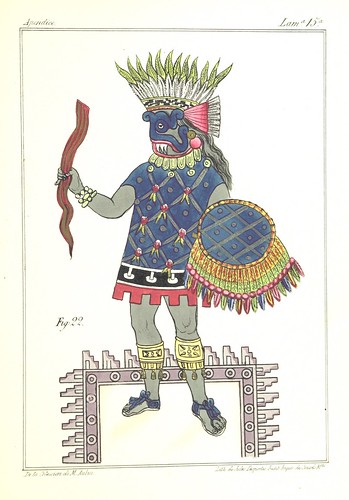
Our colleague Jennifer Howes was intrigued to know more about the $4 bill featured in her earlier blogpost so she wrote to the Bank of Canada. She has now amended her earlier post in response to the reply received and we are also posting the very helpful information provided at the bottom of the blog:
Have you ever seen a $4 bill? The specimen bank note shown here was from the Canadian $4 bill’s final issue, in 1902. Here are three awkward notes about the $4 bill.
Awkward note 1 - The picture at the centre shows a ship passing through the Canadian locks of the Sault St Marie Canal. Completed in 1895, the canal straddled the Canada-U.S. border, and connected Lake Superior to a major shipping route, leading to the Atlantic Ocean. The $4 bill’s previous issue, in 1900, mistakenly showed the locks on the American side of the canal. It was swiftly recalled, and replaced with this one, which definitely shows the Canadian locks.
Awkward note 2 –These days, Canadian money usually shows a portrait of Canada’s ruling monarch, or a past Prime Minister. However, the $4 bill of 1902 has portraits of the Earl of Minto, Gilbert Elliot-Murray-Kynynmound (1845-1914), and his wife, Mary. The Earl of Minto was the 8th Governor General of Canada, from 1898 to 1904. In this role, he was the British monarch’s representative in Canada. He went on to become the 17th Viceroy of India from 1905 to 1910.
Awkward note 3 (the obvious one) – Today, it seems absurd to have a $4 bill!! However, it made sense in 1902 because that amount converted into one British Pound. By 1912 the Canadian $4 bill was removed from circulation to make way for the more familiar $5 bill.
The British Library’s $4 bill is currently on display, along with a selection of maps, stamps, coins and other bank notes, in a small exhibition in the Maps Reading Room Foyer from December 2013 to March 2014.
Bibliography:
R.J. Graham (editor) A Charlton Standard Catalogue of Canadian Government Paper Money (25th edition), Toronto: Charlton Press, 2013.
And here's the reply to Jennifer's original blogpost from David Bergeron, Curator, National Currency Collection - Bank of Canada, showing that the $4 bill was not so awkward after all:
The first point is correct, the vignette was changed to show a view of the locks at Sault Ste Marie from the Canadian side. As for the second point, the 1902 $2 note features the portraits of Lord and Lady Minto not because Queen Victoria had just died, but because up until 1911, the Dominion government had opted to depict the portraits of Governor Generals and their spouses on low-denomination notes: Earl and Countess of Dufferin on the 1878 $1 and $2; Marquis de Lorne on the 1882 $4; Marquis and Marchioness of Lansdowne on the 1887 $2; Earl and Countess of Aberdeen on the 1897 and 1898 $1; Lord and Lady Minto on the 1900 and 1902 $4; Lord and Lady Grey on the 1911 $1. That doesn’t mean that members of the Royal family were not depicted on Dominion notes. In fact Edward (as Prince of Wales and future King Edward VII) is on the 1897 $2 note. Later issues, including the 1911 $500 and $1000 notes, the 1914 $2 note, the 1917 $1 and the 1923 $1 and $2 notes all depicted members of the Royal family: King Queen Mary (1911 $500), George V (1911 $1,000), Duke and Duchess of Connaught (1914 $2); Princess Patricia (1917 $1), George V (1923 $1) and Edward Prince of Wales, the future Edward VIII (1923 $2). Other early Dominion of Canada notes depicted historic figures like Jacques Cartier (1870 $1) and General Wolfe and General Montcalm – the two commanders in the battle of the Plains of Abraham in 1759 (1870 $2). The only Dominion of Canada government note ever to have featured Queen Victoria is the 1871 $500 note. It depicts a young bust of Victoria based on the painting of the Queen by Franz Xavier Winterhalter. It’s one note whose existence is known, yet no issued examples have ever been discovered.
Finally to your third point and alluding to your question, there is nothing absurd about a $4 note. As you mention in your inquiry $4 notes were issued because they were equivalent to a British pound. So at a time when some merchants may still have been keeping their books in pounds, or were conducting business with companies in Britain, the use of a $4 note would have been more convenient to make payment.




![Image taken from page 230 of '[The Countries of the World: being a popular description of the various continents, islands, rivers, seas, and peoples of the globe. [With plates.]]'](http://farm8.staticflickr.com/7448/11305797304_27fb61f292.jpg)

